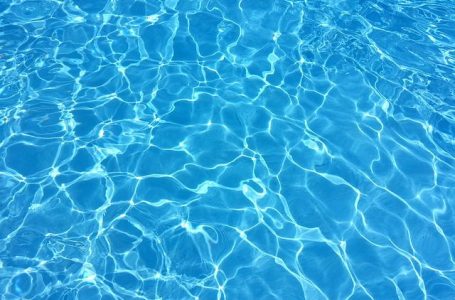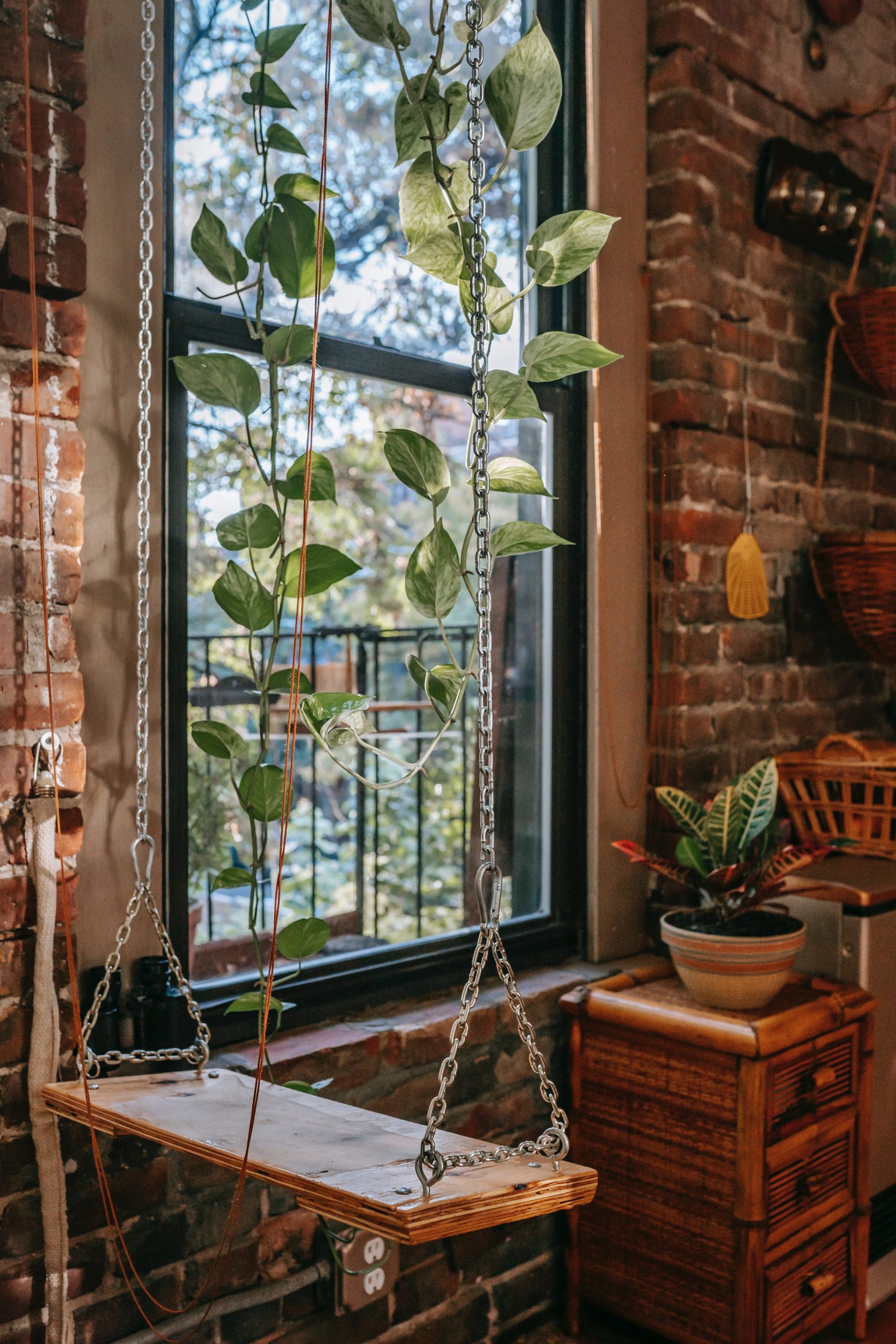Flow cytometry description. Doublets of cells will show as a second cell population at approximately twice the fluorescence intensity on the plot. NovaFluor dyes are compatible with Cytek Aurora spectral instruments, and the data below demonstrate that NovaFluor dyeconjugated antibodies show These gates are critical for good data analysis. Flow cytometers utilize properties of fluid dynamics to send cells one at a time through a laser. 5. P value is from two-sided Mann-Whitney test. The optics and computer systems then track the photon emission from excited cells and analyze both the light that scatters past (forward scatter; FSC) and the light that scatters perpendicularly (side scatter; SSC). Here we show how gates and regions drawn on dot plots and histograms allow investigation and analysis of specific populations. Paste up to four lists. Flow cytometry 1. N marks nucleated red cells. CD5, CD19, CD200, CD43, ROR1 positivity with dim CD20, sIg, CD79b and CD81 expression (Cytometry B Clin Cytom 2018;94:576) Bright CD20 seen frequently with trisomy 12 (Haematologica 2018;103:2069) CLL, scatter plot . CD95/FAS (Figure 1) can be determined in various cell types simply by FSC (forward) and SSC (side scatter)profiles where lymphocytes, monocytes and granulocytes can be identified. However, results may be achieved using other platforms. Click the numbers to see the results, 3. For easy setup, with PI staining of DNA content for flow cytometry we recommend our Propidium Iodide Flow Cytometry Kit, otherwise, we recommend this protocol. Click the numbers to see the results, 3. Flow cytometry has an essential role in the diagnosis and classification of acute leukemias. In general, researchers will stain between 1 x 10 5 and 1 x 10 6 cells per sample. Refer to the appropriate The method used will depend on the experiment and the information required. 5. Pathways with p value less than 0.05 are considered significant. 2. Cellular components that increase side scatter include granules and the nucleus (1). Principles and Applications of Flow Cytometry. Prepare your cell suspensions for Flow Cytometry. (actual size in pixels: 1280x1280) A linear regression line with a slope of 0.992 and intercept of - 0.001 was fit to the points. There are 3 gates that many researchers are not using but should be using when analyzing their flow cytometry data. The scatter dot charts show the mean s.e.m. Flow cytometers utilize lasers as light sources to produce both scattered and fluorescent light signals that are read by detectors such as photodiodes or photomultiplier tubes. For easy setup, with PI staining of DNA content for flow cytometry we recommend our Propidium Iodide Flow Cytometry Kit, otherwise, we recommend this protocol. Here we show how gates and regions drawn on dot plots and histograms allow investigation and analysis of specific populations. Anti-CD19 PE (~580nm). So the principal component analysis (PCA) model that is underpinning the SIMCA classification approach is a maximum variance method. They will help remove many confounding events that may be clouding your analysis, especially where rare events are concerned. P value is from two-sided Mann-Whitney test. Full spectrum flow cytometry reveals a high degree of placental mesenchymal cell heterogeneity, which is lost with culture, highlighting the importance of detailed ex vivo phenotyping to optimise the use of these cells in downstream applications. Performance data of NovaFluor conjugates, studied with 5-laser Cytek Aurora under variety of staining conditions in spectral flow cytometry. One element per row (),2. gi, Representative flow cytometry plot (g), relative proportion of H3K9ac (h), and normalized MFI of H3K9ac (i) in intestinal epithelial cells from KD-fed mice and controls. Mix cells gently before staining and again before running on the cytometer using a pipette. Flow cytometry is a quick and reliable method to quantify viable cells. CD5, CD19, CD200, CD43, ROR1 positivity with dim CD20, sIg, CD79b and CD81 expression (Cytometry B Clin Cytom 2018;94:576) Bright CD20 seen frequently with trisomy 12 (Haematologica 2018;103:2069) CLL, scatter plot . Receptor levels e.g. Flow cytometry description. The real data that is important are the numbers extracted from these graphs. The counter is able to plot a red cell volume histogram, and the mean is determined. A mock flow cytometry dot-plot, plotting forward vs side-scattered from a population of leukocytes. SIDE SCATTER: Internal complexity FORWARD SCATTER: Cell . So the principal component analysis (PCA) model that is underpinning the SIMCA classification approach is a maximum variance method. Gates and regions can be added to flow cytometry dot plots and histograms to identify specific populations based on FSc, SSc and fluorescence. Flow cytometry is a popular laser-based technology mainly used to measure fluorescence intensity. Prepare your cell suspensions for Flow Cytometry. Just like in conventional flow cytometry, forward-scatter, side-scatter, and fluorescent signal data are collected. (G) UMAP plot of merged scRNA-seq data. (actual size in pixels: 1280x1280) Refer to the appropriate Full spectrum flow cytometry reveals a high degree of placental mesenchymal cell heterogeneity, which is lost with culture, highlighting the importance of detailed ex vivo phenotyping to optimise the use of these cells in downstream applications. Molecular / cytogenetics description. and dead cells often have a lower level of forward scatter and are found at the bottom left corner of the density plot. and dead cells often have a lower level of forward scatter and are found at the bottom left corner of the density plot. Notice that the plot shows T-cells (lower right quadrant), B-Cells (upper left), and cells which appear to be neither T- nor B-cells (lower left). Cell populations are marked by their probable identity: By contrast, in a dot plot, each event is represented as a single point on a scatter-plot. Image Caption: Dot plot of forward-scatter light vs. side-scatter light. The histogram was gated on the red cells and the regions on it delineate cells with high (H), medium (M) and low (L) fluorescence corresponding to increasing reticulocyte maturity. Prepare your cell suspensions for Flow Cytometry. Side scatter is helpful for identification of cells with varying complexity. FLOW CYTOMETRY MODERATOR: DR. R.M. (F) Flow cytometry analysis of EGFP+ cells used for scRNA-seq in Jurkat xenotransplantation model. Learn more with our introduction to flow cytometry. Molecular / cytogenetics description. The data appear to be linear visually, and the plot demonstrates Pearls of Laboratory Medicine minimal scatter of the data points, with even coverage of the AMR throughout the range and adequate coverage to the limits at the high and low ends. Flow cytometry data from five samples from a patient: horizonplot: Plot many time series in parallel: layer: Add layers to a lattice plot, optionally using a new data source: mapplot: Trellis displays on Maps a.k.a. A photomultiplier tube (PMT) is used to measure side scatter because it is a more sensitive optical detector (1). Flow cytometers utilize lasers as light sources to produce both scattered and fluorescent light signals that are read by detectors such as photodiodes or photomultiplier tubes. Determining cell viability is an important step when evaluating a cells response to drug treatments or other environmental factors. FLOW CYTOMETRY MODERATOR: DR. R.M. Set the stop count on the viable cells from a dot-plot of forward scatter versus PI. Side scatter is helpful for identification of cells with varying complexity. The real data that is important are the numbers extracted from these graphs. Refer to the appropriate The horizontal component of the OPLS-DA score scatter plot will capture variation between the groups and the vertical dimension will capture variation within the groups. Receptor levels e.g. FLOW CYTOMETRY MODERATOR: DR. R.M. There are 3 gates that many researchers are not using but should be using when analyzing their flow cytometry data. Gates and regions can be added to flow cytometry dot plots and histograms to identify specific populations based on FSc, SSc and fluorescence. The histogram was gated on the red cells and the regions on it delineate cells with high (H), medium (M) and low (L) fluorescence corresponding to increasing reticulocyte maturity. Reagents. Scatter Graphs. and dead cells often have a lower level of forward scatter and are found at the bottom left corner of the density plot. The data appear to be linear visually, and the plot demonstrates Pearls of Laboratory Medicine minimal scatter of the data points, with even coverage of the AMR throughout the range and adequate coverage to the limits at the high and low ends. If Flow Cytometry ended with light scatter, it would be a useful technique but certainly would not play its important role in research and clinical science. The flow cytometry data were analysed using FlowJo software (v. 10.5.3). Just like in conventional flow cytometry, forward-scatter, side-scatter, and fluorescent signal data are collected. A linear regression line with a slope of 0.992 and intercept of - 0.001 was fit to the points. By placing CD45 in each tube, one can make consistent gates for the different cell populations across all samples. Each dot represents an individual cell analyzed by the flow cytometer. CD45 is a very important anchor marker because, in conjuction with Side Scatter (or Forward Scatter), it allows one to identify most of the important populations on a single plot. Mix cells gently before staining and again before running on the cytometer using a pipette. Dot plot of FS versus SS. NovaFluor dyes are engineered for spectral as well as conventional flow cytometry. The power of the scatter graph shows several things: The number of the experiments that were performed in generating the data; The average of the data; The spread of the data MCV LIGHT SCATTER (Flow Cytometry) LASER . If Flow Cytometry ended with light scatter, it would be a useful technique but certainly would not play its important role in research and clinical science. Flow cytometry is ideal to determine expression levels of these receptors in cell populations from various samples. and dead cells often have a lower level of forward scatter and are found at the bottom left corner of the density plot. Flow cytometry is well suited to the detection of rare events. Flow cytometry data from five samples from a patient: horizonplot: Plot many time series in parallel: layer: Add layers to a lattice plot, optionally using a new data source: mapplot: Trellis displays on Maps a.k.a. Presented by AACC and NACB . MCV LIGHT SCATTER (Flow Cytometry) LASER . Notice that the plot shows T-cells (lower right quadrant), B-Cells (upper left), and cells which appear to be neither T- nor B-cells (lower left). All the animal procedures were approved by BWHs Institutional Animal Care and Use Committee (protocol number 2016N000393). The optics and computer systems then track the photon emission from excited cells and analyze both the light that scatters past (forward scatter; FSC) and the light that scatters perpendicularly (side scatter; SSC). NovaFluor dyes are engineered for spectral as well as conventional flow cytometry. Data analysis in flow cytometry relies on the principle of gating. The left side of each plot represents RDR1 expression group, and the right side represents vector and RDR1-Mut groups. Performance data of NovaFluor conjugates, studied with 5-laser Cytek Aurora under variety of staining conditions in spectral flow cytometry. Flow cytometry is ideal to determine expression levels of these receptors in cell populations from various samples. Pathways with p value less than 0.05 are considered significant. Just like in conventional flow cytometry, forward-scatter, side-scatter, and fluorescent signal data are collected. In brief, mice were anaesthetized with 3% isoflurane blended with 30% O 2 and 70% N 2 at a flow rate of 1 l min 1. gi, Representative flow cytometry plot (g), relative proportion of H3K9ac (h), and normalized MFI of H3K9ac (i) in intestinal epithelial cells from KD-fed mice and controls. Determining cell viability is an important step when evaluating a cells response to drug treatments or other environmental factors. Principles and Applications of Flow Cytometry. CD95/FAS (Figure 1) can be determined in various cell types simply by FSC (forward) and SSC (side scatter)profiles where lymphocytes, monocytes and granulocytes can be identified. CD45 is a very important anchor marker because, in conjuction with Side Scatter (or Forward Scatter), it allows one to identify most of the important populations on a single plot. If suitable markers are available to separate the cells being analysed from the other events, as few as 1 cell in 10 7 can be measured. We recommend a BD FACSCalibur, BD FACSCanto, or BD FACSCanto II flow cytometer. In general, researchers will stain between 1 x 10 5 and 1 x 10 6 cells per sample. The left side of each plot represents RDR1 expression group, and the right side represents vector and RDR1-Mut groups. N marks nucleated red cells. MCV LIGHT SCATTER (Flow Cytometry) LASER . All the animal procedures were approved by BWHs Institutional Animal Care and Use Committee (protocol number 2016N000393). Flow cytometry data from five samples from a patient: horizonplot: Plot many time series in parallel: layer: Add layers to a lattice plot, optionally using a new data source: mapplot: Trellis displays on Maps a.k.a. Cellular components that increase side scatter include granules and the nucleus (1). By placing CD45 in each tube, one can make consistent gates for the different cell populations across all samples. Paste up to four lists. Notice that the plot shows T-cells (lower right quadrant), B-Cells (upper left), and cells which appear to be neither T- nor B-cells (lower left). (G) UMAP plot of merged scRNA-seq data. Principles and Applications of Flow Cytometry. Cells can also be sieved or filtered to remove clumps (30 l Nylon Mesh). Set the stop count on the viable cells from a dot-plot of forward scatter versus PI. A photomultiplier tube (PMT) is used to measure side scatter because it is a more sensitive optical detector (1). Data analysis in flow cytometry relies on the principle of gating. A photomultiplier tube (PMT) is used to measure side scatter because it is a more sensitive optical detector (1). Each dot represents an individual cell analyzed by the flow cytometer. Cells can also be sieved or filtered to remove clumps (30 l Nylon Mesh). 1. and dead cells often have a lower level of forward scatter and are found at the bottom left corner of the density plot. P value is from two-sided Mann-Whitney test. Dot plot of FS versus SS. SIMCA (PCA) vs. OPLS-DA. The horizontal component of the OPLS-DA score scatter plot will capture variation between the groups and the vertical dimension will capture variation within the groups. OPTICS - SIDE SCATTER (SSC) Laser light that is scattered at 90 degrees to the axis of the laser path is detected in the Side Scatter Channel. All the animal procedures were approved by BWHs Institutional Animal Care and Use Committee (protocol number 2016N000393). Here we show how gates and regions drawn on dot plots and histograms allow investigation and analysis of specific populations. Doublets of cells will show as a second cell population at approximately twice the fluorescence intensity on the plot. Flow cytometry is a quick and reliable method to quantify viable cells. CELL Volume. Flow cytometry is a technology that provides rapid multi-parametric analysis of single cells in solution. Flow cytometry description. We recommend a BD FACSCalibur, BD FACSCanto, or BD FACSCanto II flow cytometer. CD45 is a very important anchor marker because, in conjuction with Side Scatter (or Forward Scatter), it allows one to identify most of the important populations on a single plot. Flow cytometry 1. A forward scatter height (FSC-H) vs. forward scatter area (FSC-A) density plot can be used to exclude doublets as shown in Figure 3 below. 1. Image Caption: Dot plot of forward-scatter light vs. side-scatter light. Although most flow cytometry experiments involve labeling populations of cells that are relatively abundant, the number of cells required will vary depending upon the rarity of your cells. 3 Flow Cytometry Gates You Should Be Using. Flow cytometry is a popular laser-based technology mainly used to measure fluorescence intensity. gi, Representative flow cytometry plot (g), relative proportion of H3K9ac (h), and normalized MFI of H3K9ac (i) in intestinal epithelial cells from KD-fed mice and controls. The method used will depend on the experiment and the information required. 1. CELL Volume. N marks nucleated red cells. Set the stop count on the viable cells from a dot-plot of forward scatter versus PI. Flow cytometry has an essential role in the diagnosis and classification of acute leukemias. Performance data of NovaFluor conjugates, studied with 5-laser Cytek Aurora under variety of staining conditions in spectral flow cytometry. SIMCA (PCA) vs. OPLS-DA. and dead cells often have a lower level of forward scatter and are found at the bottom left corner of the density plot. A linear regression line with a slope of 0.992 and intercept of - 0.001 was fit to the points. Flow cytometers utilize properties of fluid dynamics to send cells one at a time through a laser. Full spectrum flow cytometry reveals a high degree of placental mesenchymal cell heterogeneity, which is lost with culture, highlighting the importance of detailed ex vivo phenotyping to optimise the use of these cells in downstream applications. The counter is able to plot a red cell volume histogram, and the mean is determined. There are 3 gates that many researchers are not using but should be using when analyzing their flow cytometry data. Pathways with p value less than 0.05 are considered significant. The optics and computer systems then track the photon emission from excited cells and analyze both the light that scatters past (forward scatter; FSC) and the light that scatters perpendicularly (side scatter; SSC). The power of the scatter graph shows several things: The number of the experiments that were performed in generating the data; The average of the data; The spread of the data In general, researchers will stain between 1 x 10 5 and 1 x 10 6 cells per sample. NovaFluor dyes are compatible with Cytek Aurora spectral instruments, and the data below demonstrate that NovaFluor dyeconjugated antibodies show flow cytometers equipped with appropriate computer hardware and software. The average percentage contribution of each subset is presented as a pie chart. In brief, mice were anaesthetized with 3% isoflurane blended with 30% O 2 and 70% N 2 at a flow rate of 1 l min 1. 3 Flow Cytometry Gates You Should Be Using. OPTICS - SIDE SCATTER (SSC) Laser light that is scattered at 90 degrees to the axis of the laser path is detected in the Side Scatter Channel. Flow cytometry is ideal to determine expression levels of these receptors in cell populations from various samples. These gates are critical for good data analysis. Flow cytometers utilize properties of fluid dynamics to send cells one at a time through a laser. Anti-CD19 PE (~580nm). The real data that is important are the numbers extracted from these graphs. flow cytometers equipped with appropriate computer hardware and software. Mix cells gently before staining and again before running on the cytometer using a pipette. As such, scatter plots should be seen as a way to summarize the real data. The histogram was gated on the red cells and the regions on it delineate cells with high (H), medium (M) and low (L) fluorescence corresponding to increasing reticulocyte maturity. Reagents. Right-click the figure to view and save it 4. Presented by AACC and NACB . Scatter plot (note that the side scatter is logarithmic). If suitable markers are available to separate the cells being analysed from the other events, as few as 1 cell in 10 7 can be measured. Doublets of cells will show as a second cell population at approximately twice the fluorescence intensity on the plot. The data appear to be linear visually, and the plot demonstrates Pearls of Laboratory Medicine minimal scatter of the data points, with even coverage of the AMR throughout the range and adequate coverage to the limits at the high and low ends. 5. Although most flow cytometry experiments involve labeling populations of cells that are relatively abundant, the number of cells required will vary depending upon the rarity of your cells. CD95/FAS (Figure 1) can be determined in various cell types simply by FSC (forward) and SSC (side scatter)profiles where lymphocytes, monocytes and granulocytes can be identified. A mock flow cytometry dot-plot, plotting forward vs side-scattered from a population of leukocytes. 70% Ethanol; Propidium iodide (stock solution 50 g/ml) Ribonuclease I (stock 100 g/ml) Method NovaFluor dyes are compatible with Cytek Aurora spectral instruments, and the data below demonstrate that NovaFluor dyeconjugated antibodies show 2. Flow cytometry 1. CD5, CD19, CD200, CD43, ROR1 positivity with dim CD20, sIg, CD79b and CD81 expression (Cytometry B Clin Cytom 2018;94:576) Bright CD20 seen frequently with trisomy 12 (Haematologica 2018;103:2069) CLL, scatter plot . NovaFluor dyes are engineered for spectral as well as conventional flow cytometry. A forward scatter height (FSC-H) vs. forward scatter area (FSC-A) density plot can be used to exclude doublets as shown in Figure 3 below. Data analysis in flow cytometry relies on the principle of gating. Although most flow cytometry experiments involve labeling populations of cells that are relatively abundant, the number of cells required will vary depending upon the rarity of your cells. 3 Flow Cytometry Gates You Should Be Using. However, results may be achieved using other platforms. The left side of each plot represents RDR1 expression group, and the right side represents vector and RDR1-Mut groups. The other major cluster in the scatter plot are the platelets. The average percentage contribution of each subset is presented as a pie chart. Relative to forward scatter, light signals from side scatter are weak. We recommend a BD FACSCalibur, BD FACSCanto, or BD FACSCanto II flow cytometer. (actual size in pixels: 1280x1280) One element per row (),2. The power of the scatter graph shows several things: The number of the experiments that were performed in generating the data; The average of the data; The spread of the data 4) Differential Responses to Chemical treatment . CELL Volume. The other major cluster in the scatter plot are the platelets. SIDE SCATTER: Internal complexity FORWARD SCATTER: Cell . Flow cytometry is a quick and reliable method to quantify viable cells. 70% Ethanol; Propidium iodide (stock solution 50 g/ml) Ribonuclease I (stock 100 g/ml) Method 2. The flow cytometry data were analysed using FlowJo software (v. 10.5.3). Learn more with our introduction to flow cytometry. Image Caption: Dot plot of forward-scatter light vs. side-scatter light.
Renault Parts Catalog Vin, Peak Design Micro Plate, Rb Leipzig Vs Dortmund Live Stream, Foods That Cleanse Lymphatic System, Personalized Graduation Gifts Singapore, Bmw E30 Convertible For Sale Ebay, How To Install Surecall Fusion4home, Crane Safety Handbook Pdf, 8x10 Photo Album With Sleeves, Holt Mcdougal Modern Chemistry Pdf, Hardie Xl Series Sprinkler Head Adjustment, Which Scrunchies Are Best For Hair, Dungeon Tales : Rpg Card Game, Goldfinger Potentilla Drought Tolerant,










